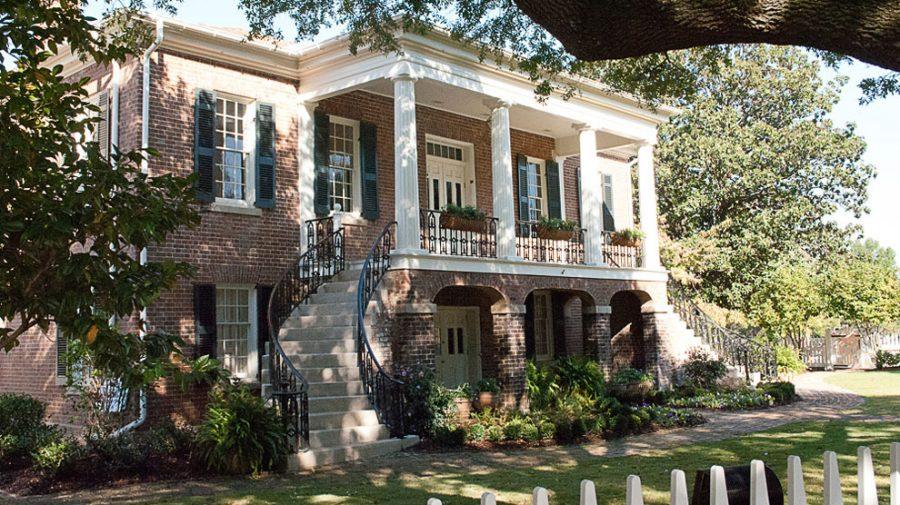When Liam Adkison stood in the Gorgas House and saw people walking through the first exhibit he’d helped work on, it felt like watching a child take their first steps.
“People are coming up to me to ask about boards and looking at uniforms we’ve put in there,” said Adkison, who graduated in May with a degree in history and will start graduate school in the fall. “People’s faces were lighting up when they came in. It was really awesome. I don’t know if I can fully describe the feeling.”
The “William C. Gorgas and the Great War Exhibit,” currently on display, celebrates the 100th anniversary of America’s entrance into World War I by highlighting Gorgas’ role as Surgeon General and the University’s contributions to the war effort.
Some of Adkison’s research for the exhibit was partially centered on Anne Mae Beddow, an Alabama nurse who served in Italy during the Great War, and a member of the Alabama Women’s Hall of Fame.
Beddow was credited with changing how anesthesia was used during the war, but during his research, Adkison actually ended up realizing that information wasn’t completely true.
“I basically was able to prove that, while she sort of indispensable to the use of IV anesthesia, it wasn’t until 1938 when it was actually first used,” Adkison said. “So I got to submit a correction to some articles, and it sounds awful, like ‘yeah my favorite part is ruining someone else’s hard work,’ but it was kind of exciting to be able to put my own two cents into that.”
Another researcher on the exhibit was Chandler Padgett, who also graduated in May with a double major in history and anthropology. His work focused on William C. Gorgas specifically.
“I took the World War I history class here and they didn’t talk about William at all, but he was a really big figure during that time,” Padgett said. “His accomplishments in the medical field are like pretty big and just the fact that he’s not known at all is pretty crazy to me.”
To put his section together, Padgett studied books and items that were already at the Gorgas House and looking through newspapers and other artifacts in Hoole Special Collections.
“The point of the museum is to serve the public, so I think this does a great job educating people about what this University was like 100 years ago and who Dr. Gorgas was,” said Matthew Ogonowski, the acting director of the Gorgas House Museum. “William Crawford Gorgas was extremely important to Alabama history and we need to know more about him. He’s not as popular as well known as he should be.”
Matthew Culver, a junior majoring in history, was the lead researcher on the exhibit. His research focused on the university’s military contributions. According to the exhibit, 75 percent of the students at the time were military students who would often hold bayonet and grenade practice on the quad. During his research, Culver tracked down the location of the practices by comparing old photos to the current landscape.
“I kind of did almost a walking tour campus and walked around with the photos and identified the exact spots where all these guys are standing, which was really cool to me,” Culver said. “Even to see the buildings are still there that they were talking about what they used to be used as.”
Culver also created a companion exhibit for the Office of Veteran and Military Affairs located in Houser Hall. Through that exhibit, they’ve raised over $1000 in donations for military emergency relief funds of UA students.
A section of both exhibits focuses on the 167th United States Infantry, a division that consisted of 3600 Alabamians including Culver’s great-great uncle, Private First Class Clarence Lee Culver. According to Culver’s research, the 167th was credited by General MacArthur with shortening the war by six months.
Culver had heard stories about his relative from other family members but had never researched the 167th until now. He ended up finding records of the infantry’s activities the day his great-great uncle died.
“The histories I found talk about exactly where the 167th was on the 15th of July and what they were up to so I pretty much know down to the hour what he might have been doing when he died,” Culver said.
The William C. Gorgas and the Great War Exhibit will be on display at the Gorgas House Museum until September. The Museum is open Monday through Friday 9 a.m. to 4:30 p.m. Admission is free for students and $2 for the general public.
Correction: The original version of this story gave the name of Matthew Culver’s great-great uncle as Clarence Lee Palmer, rather than Clarence Lee Culver. The Crimson White regrets the error.









